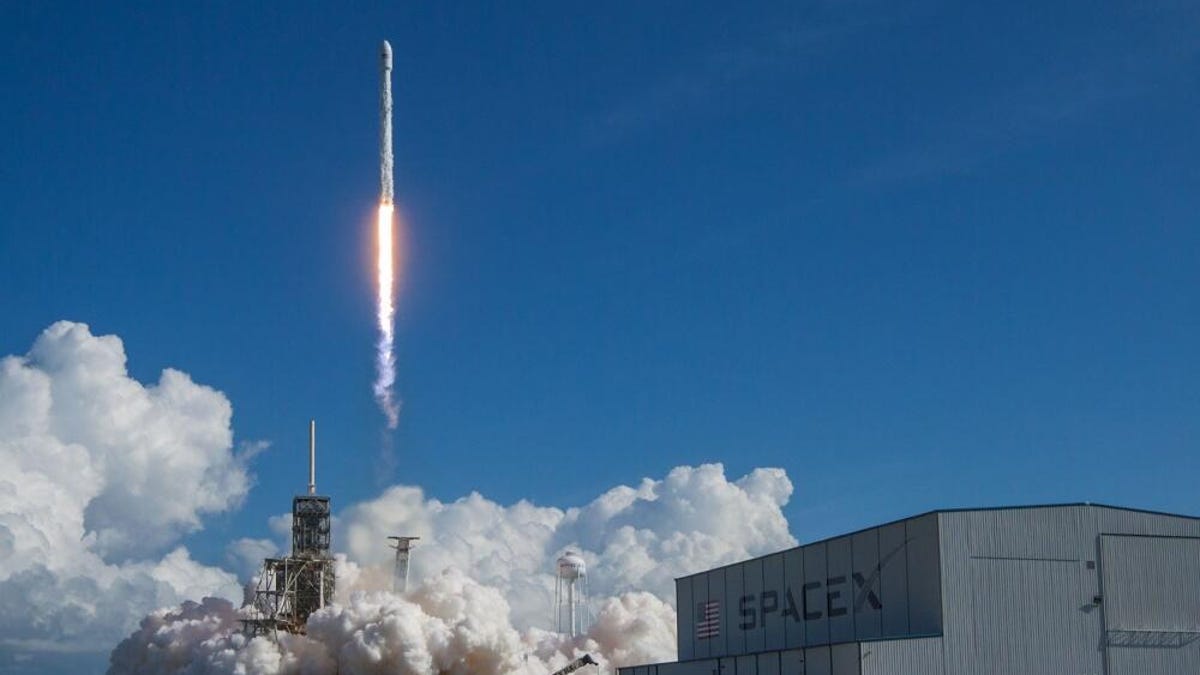SpaceX launches satellites to orbit, but misses catching nose cone
Elon Musk's rocket outfit fails to grab its fairing.

A SpaceX Falcon 9 rocket launches from NASA's Kennedy Space Center in Florida on Sept. 7, 2017.
SpaceX launched another Falcon 9 rocket from Florida on Monday and landed the booster for the 47th time, but narrowly missed catching the halves of the nose cone or fairing. The first stage of the rocket landed on the droneship Of Course I Still Love You in the Atlantic Ocean, but the fairing halves missed landing on two other ships equipped with giant nets, named Ms. Tree and Ms. Chief.
"Ms. Tree and Ms. Chief narrowly missed catching the fairing halves -- team is working to recover them for potential use on a future flight," SpaceX reported on Twitter.
SpaceX has caught one of the fairing halves before, and those components have also been fished out of the ocean, refurbished and flown again, but this was the first time the company attempted to catch both halves right after a launch.
The routine mission from Cape Canaveral Air Force Station succeeded in sending a pair of communications satellites -- JCSAT-18 and Kacific1 -- into orbit to provide services to mostly Asian markets.
Elon Musk's company did show off its recycling prowess with this mission again, as the Falcon 9 first-stage booster it used launched and landed for the third time. It previously supported two commercial resupply runs to the International Space Station in May and July.
Consider this launch a warmup for a big launch Tuesday of the European CHEOPS observatory designed to study alien worlds in detail.
Originally published Dec. 16, 11:37 a.m. PT.

